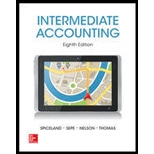
Requirement 1:
This financial statement reports a company’s resources (assets) and claims of creditors (liabilities) and
Financial disclosure:
Financial disclosure is an important tool which discloses the financial statements of an entity to its investors for investment decision making.
To determine: classified balance sheet and identifying items that would require additional disclosure.
Requirement 1:
Explanation of Solution
Classified balance sheet:
“A balance sheet with classification of assets and liabilities based on their current and noncurrent status and grouped under separate headings and sub-headings for its enhanced usefulness is known as classified balance sheet”.
Following is the classified balance sheet of Corporation VE on December 31, 2016
| Corporation VE | ||
| Balance Sheet | ||
| At December 31, 2016 | ||
| Assets | Amount | Amount |
| Current assets: | ||
| Cash and cash equivalents(1) | $117,000 | |
| Marketable securities(2) | $132,000 | |
|
$115,000 |
||
| Loans to employees | $40,000 | |
| Interest receivable | $12,000 | |
| Note receivable—current portion | $50,000 | |
| Inventories | $215,000 | |
| Prepaid expenses | $16,000 | |
| Total current assets | $697,000 | |
| Investments: | ||
| Marketable securities | $35,000 | |
| Note receivable | $200,000 | |
| Total investments | $235,000 | |
| Property, plant, and equipment: | ||
| Land | $280,000 | |
| Buildings | $1,550,000 | |
| Machinery and equipment | $637,000 | |
| $2,467,000 | ||
| Less: |
-$620,000 | |
| Less: Accumulated depreciation-equipment | -$210,000 | |
| Net property, plant, and equipment | $1,637,000 | |
| Intangible assets: | ||
| Patent | $152,000 | |
| Franchise | $40,000 | |
| Total intangible assets | $192,000 | |
| Total assets | $2,761,000 | |
| Liabilities and Shareholders' Equity | Amount | Amount |
| Current liabilities: | ||
| Accounts payable | $189,000 | |
| Dividends payable | $10,000 | |
| Interest payable | $16,000 | |
| Taxes payable | $40,000 | |
| Deferred revenue(4) | $48,000 | |
| Total current liabilities | $303,000 | |
| Long-term liabilities: | ||
| Notes payable | $300,000 | |
| Deferred revenue(4) | $12,000 | |
| Total long-term liabilities | $312,000 | |
| Total liabilities =$ | $615,000 | |
| Shareholders’ equity: | ||
|
Common stock, no par value; 1,000,000 shares authorized; 500,000 shares issued and outstanding |
$2,000,000 |
|
| $146,000 | ||
| Total shareholders’ equity | $2,146,000 | |
| Total liabilities and shareholder equity | $2,761,000 | |
Working notes:
1. Calculate cash and cash equivalents.
2. Calculate the amount of short-term investment.
3. Calculate the amount of notes receivable, net of allowance for uncollectible accounts.
4. Calculate the amount of deferred revenue
Requirement 2:
The following are the items that would require additional disclosure on the face of balance sheet
Requirement 2:
Explanation of Solution
Allowance for uncollectible accounts – It should be disclosed on the face of the balance sheet.
Property, plant, and equipment – The original cost of each category of property, plant, and equipment assets along with accumulated
The following are the items that would require the additional disclosure in a disclosure note:
Cash equivalents – The items consider being cash equivalent should be disclosed in a note.
Investments – The information about the types of investments and the accounting method used to value the investments should be disclosed in a note.
Inventories – The method used for inventories should be disclosed in accounting policies note. Also, the information about the breakout of inventory into raw materials, work-in process, and finished goods are disclosed in a note.
Depreciation – The method used to calculate depreciation should be disclosed in the accounting policies note.
Long-term liabilities – The information about various debt instruments, their payment terms, interest rates, and collateral pledged as security for the debt should be disclosed in a note.
Hence, the total assets and the total liabilities and share holders’ equity agrees to the amount of $2,761,000
Want to see more full solutions like this?
Chapter 3 Solutions
INTERMEDIATE ACCOUNTING
- Please provide the accurate answer to this general accounting problem using valid techniques.arrow_forwardDuring June, the production department of a process operations system completed and transferred to finished goods a total of 82,000 units of product. At the end of May, 18,000 additional units were in process in the production department and were 70% complete with respect to materials. The beginning inventory included a materials cost of $92,400 and the production department incurred a direct materials cost of $276,800 during June. Compute the direct materials cost per equivalent unit for the department using the weighted-average method.arrow_forwardMistral Inc. reported $85,000 in net profit for the year using absorption costing. The company had no units in beginning inventory, planned and actual production was24,000 units and sales were 20,500 units during the year. Variable manufacturing costs were $25 per unit and total budgeted fixed manufacturing overhead was $120,000. There was no underapplied or overapplied overhead reported during the year. Determine the net profit under variable costing.arrow_forward

 AccountingAccountingISBN:9781337272094Author:WARREN, Carl S., Reeve, James M., Duchac, Jonathan E.Publisher:Cengage Learning,
AccountingAccountingISBN:9781337272094Author:WARREN, Carl S., Reeve, James M., Duchac, Jonathan E.Publisher:Cengage Learning, Accounting Information SystemsAccountingISBN:9781337619202Author:Hall, James A.Publisher:Cengage Learning,
Accounting Information SystemsAccountingISBN:9781337619202Author:Hall, James A.Publisher:Cengage Learning, Horngren's Cost Accounting: A Managerial Emphasis...AccountingISBN:9780134475585Author:Srikant M. Datar, Madhav V. RajanPublisher:PEARSON
Horngren's Cost Accounting: A Managerial Emphasis...AccountingISBN:9780134475585Author:Srikant M. Datar, Madhav V. RajanPublisher:PEARSON Intermediate AccountingAccountingISBN:9781259722660Author:J. David Spiceland, Mark W. Nelson, Wayne M ThomasPublisher:McGraw-Hill Education
Intermediate AccountingAccountingISBN:9781259722660Author:J. David Spiceland, Mark W. Nelson, Wayne M ThomasPublisher:McGraw-Hill Education Financial and Managerial AccountingAccountingISBN:9781259726705Author:John J Wild, Ken W. Shaw, Barbara Chiappetta Fundamental Accounting PrinciplesPublisher:McGraw-Hill Education
Financial and Managerial AccountingAccountingISBN:9781259726705Author:John J Wild, Ken W. Shaw, Barbara Chiappetta Fundamental Accounting PrinciplesPublisher:McGraw-Hill Education





